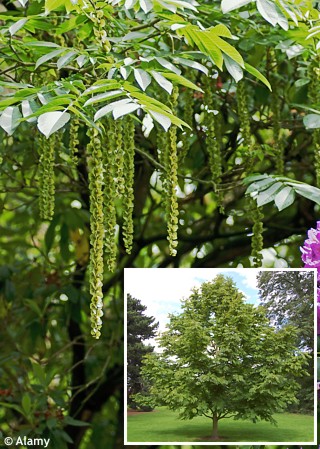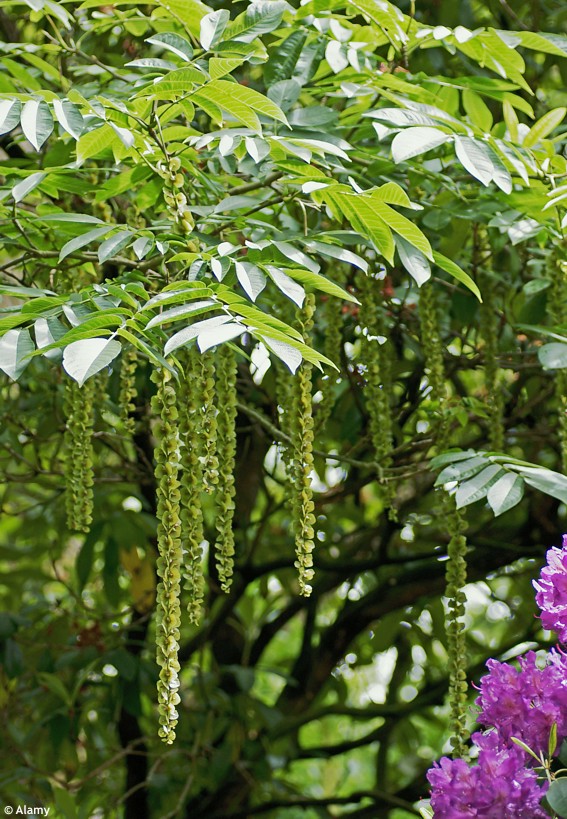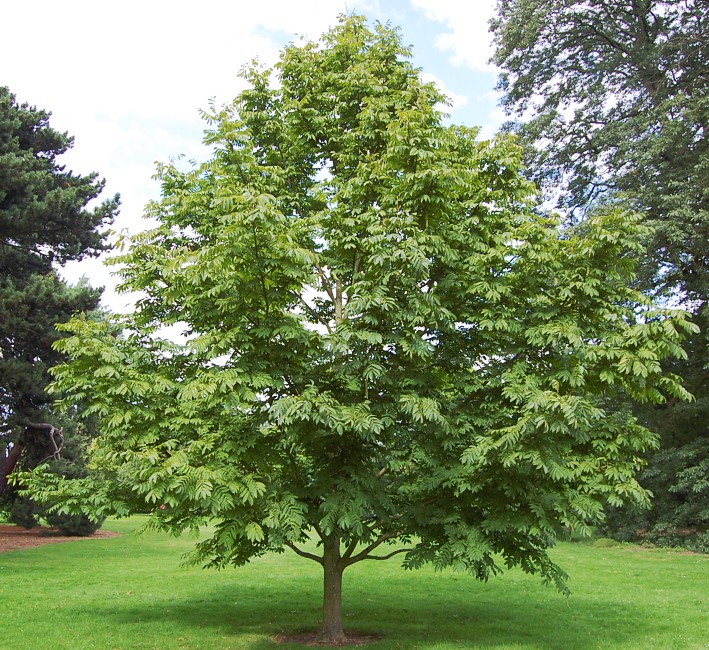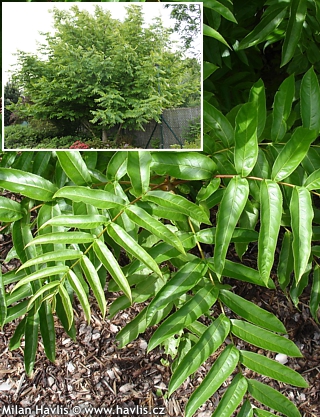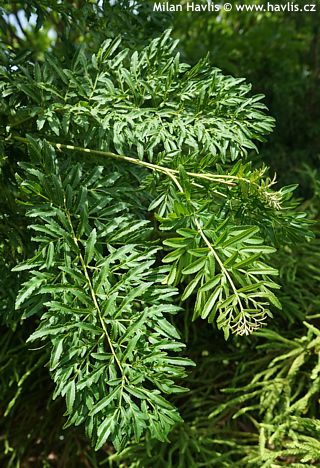Pterocarya rhoifolia Japanese wing nut


Pterocarya
Wing nut is one of the most spectacular trees for spacious landscapes. Its large leaves, fruit and monumental statue predetermine this tree to become the focal point of any large garden or a park.
Japanese wing nut has deciduous, pinnate leaves upto 40 cm long, compound of up to 21 short, broadly elliptic leaflets which resemble those of sumac. They are dark green and turn yellow in autumn for a very short period. In early summer appear 25-30 cm long, narrow, pendent spikes of chartreuse green flowers followed by winged seeds.
Wing nut is a vigorous plant which needs a lot of space when grown feathered from ground. For common gardens of larger sizes a tree form with a single trunk is much more suitable.
It is quite soil adaptable. It does best in deep, fertile, moist soil and tolerates partly wet sites once established. It has plenty of strong surface roots which may be a problem for sidewalks, curbs, and sideways so allow at least 5m distance from any concrete. Fully hardy to -26°C (USDA zone 5b).
Last update: 21-01-2019

































